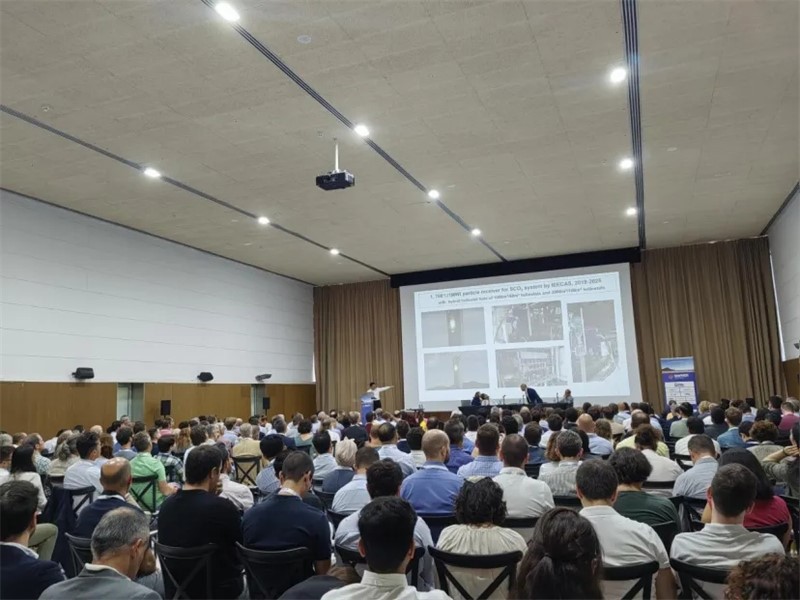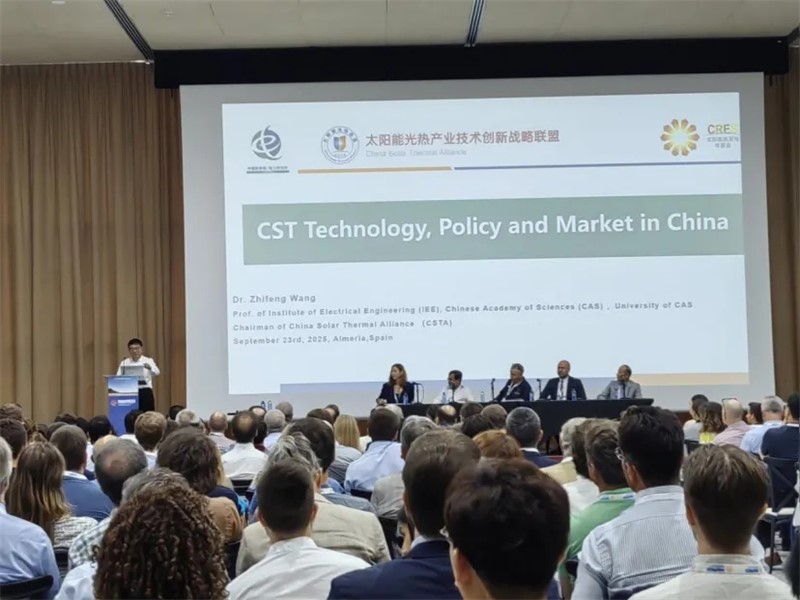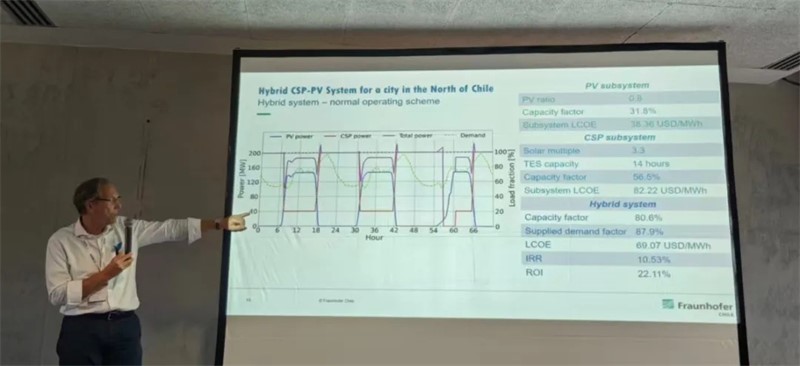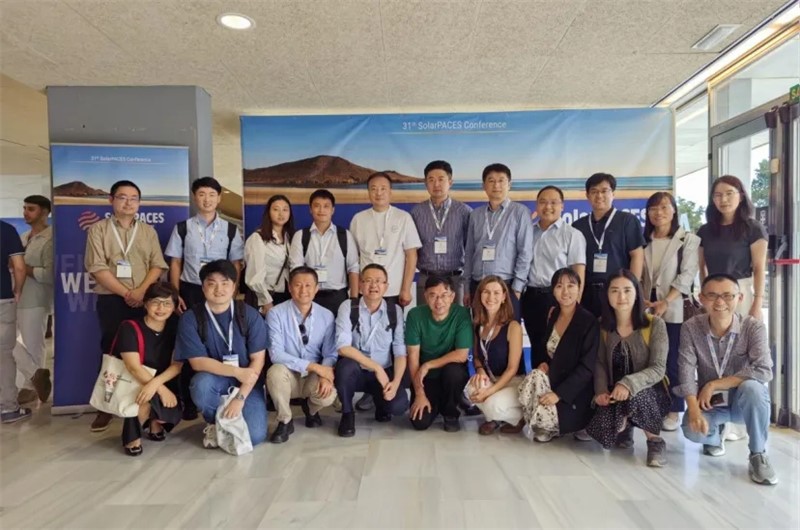By Du Fengli, Secretary-General of the China Solar Thermal Alliance & Solar Thermal Power Committee
The International Energy Agency (IEA) SolarPACES 2025 Conference(CSP and Thermochemistry Conference) was held in Almería, Spain, from September 23 to 26. The event attracted over 520 participants from 38 countries, listed below in order of paper submissions:Spain, Germany, United States, Italy, France, China, South Africa, Morocco, United Kingdom, Australia, Chile, India, Netherlands, Saudi Arabia, Sweden, Switzerland, Canada, Mexico, Turkey, Algeria, Czech Republic, Japan, Portugal, Austria, Brazil, Greece, South Korea, Slovenia, Burkina Faso, Cyprus, Denmark, Estonia, New Zealand, Senegal, Slovakia, Thailand, Togo, United Arab Emirates.

Figure: SolarPACES 2025 Conference Venue
Professor Wang Zhifeng, Researcher at the Institute of Electrical Engineering, Chinese Academy of Sciences, Vice-Chair of SolarPACES, Chairman of the CSTA, and Director of the Solar Thermal Power Committee of Chinese Renewable Energy Society, was invited to deliver the opening plenary keynote. He provided a comprehensive overview of China's advancements in CSP technologies, supportive policies, and market development.

Figure: Prof. Wang Zhifeng Delivering Keynote Address
Participants expressed strong interest and enthusiasm in China's latest developments in supercritical CO₂-based CSP systems, CSP-driven ceramic and cement production, solar thermochemistry, and large-scale commercial CSP deployment. Many attendees praised the artistic CSP photographs showcased at the end of the presentation, commenting, “Never seen such beautiful CSP plant photos—truly artistic!” Senior experts, including Dr. Gilles Flamant, Senior CSP Expert at the French National Centre for Scientific Research (CNRS) and Chair of SolarPACES, requested copies of the presentation materials.
Dr. Eduardo Zarza, former Director of the CIEMAT-PSA, highlighted in his closing remarks that the key highlight of this year's conference was China's leadership in the global commercial deployment of CSP technology. He noted that China has developed a CSP pathway adapted to local conditions and expressed confidence that, under China’s leadership, CSP electricity costs will become globally competitive.
The conference received a total of 523 abstract submissions. Spain ranked first with 154, followed by Germany (81), the United States (74), Italy (40), France (28), China (24), South Africa (16), and Morocco (11). The thematic breakdown of abstracts was as follows: 20.3% focused on thermal energy storage, 8.8% on advanced materials, manufacturing, and components, 8.8% on solar fuels and chemicals, 7.5% on process heat and solar desalination, 7.3% on systems and instrumentation, 6.3% on analysis and simulation, and 5.7% on solar concentrators and receivers.

Figure: Presentation on Chile’s 200 MW CSP-PV Hybrid Project
In terms of commercial CSP project development, countries with abundant solar resources such as Chile, Spain, Australia, Morocco, and Uzbekistan are actively advancing deployment. Chile’s government estimates the country's CSP potential to exceed 50 GW. The Atacama Desert in the Antofagasta region, with annual direct normal irradiance (DNI) exceeding 3,200 kWh/m², is particularly promising. In February 2025, Chile experienced a major nationwide blackout lasting over six hours, affecting more than 90% of the population. Due to the failure of a key transmission line, battery storage systems and backup power plants were unable to provide the necessary electricity, leaving citizens without power for an extended period. Additionally, since several towns in northern Chile—particularly Antofagasta—rely on seawater desalination for their primary water supply, over 450,000 people faced drinking water shortages during the outage. To address future blackout risks and ensure energy and water security in northern Chile, a case study has proposed the construction of a 200 MW CSP-PV hybrid plant to serve as a baseload power supply, capable of meeting 100% of Antofagasta’s electricity demand.

Figure: Group Photo of Chinese Delegates
SolarPACES is an implementing agreement under the International Energy Agency focused on CSP, currently comprising 16 member countries. On March 1, 2011, following a three-year application process and approval by both the IEA and China's Ministry of Science and Technology, the Institute of Electrical Engineering of the Chinese Academy of Sciences—the founding and leading unit of the CSTA—officially became China's contracting party to the agreement. This marked China's 13th accession to an IEA implementing agreement, following its participation in agreements on clean coal, fluidized-bed conversion, multiphase-flow science, photovoltaics, hydropower, wind energy, energy efficiency in buildings and communities, energy storage, advanced motor fuels, advanced transport materials, fusion-reactor technology, and fusion materials.


